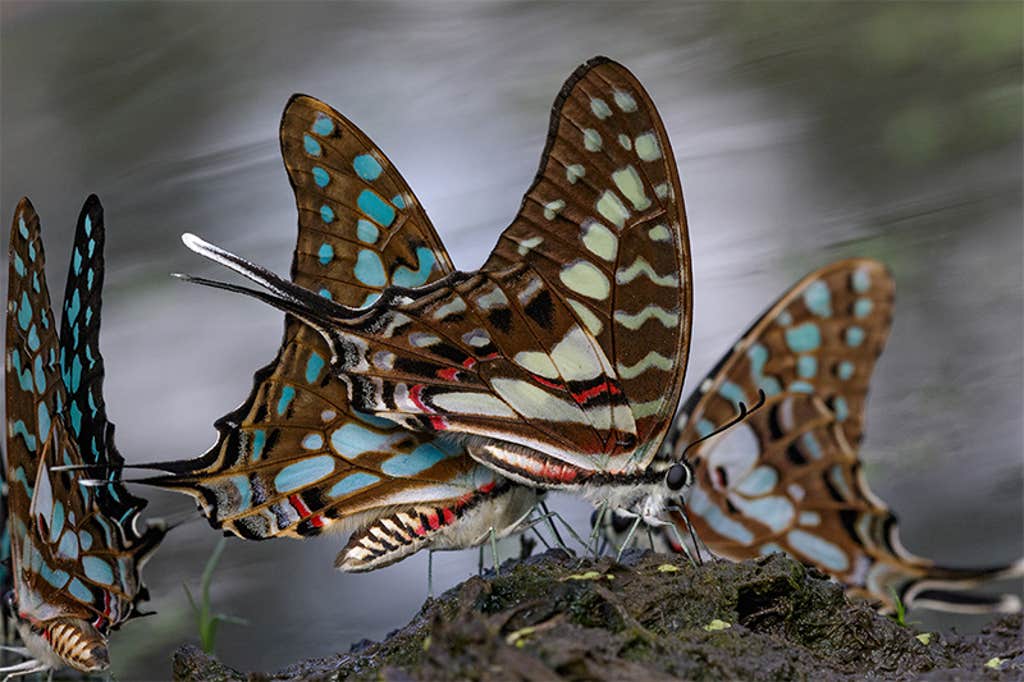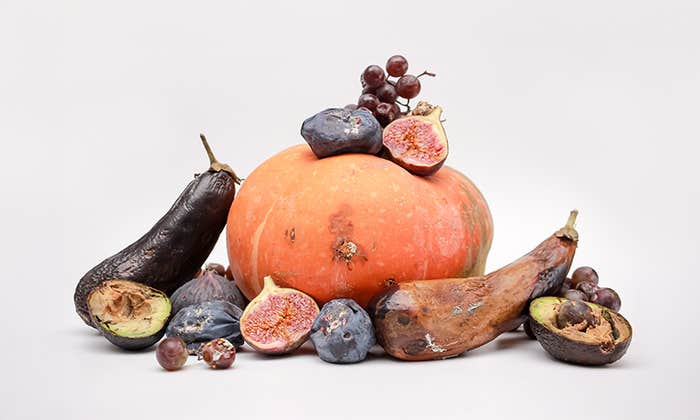
Zito Bande has always been drawn to water. After completing undergraduate studies in aquaculture at the Gaza Polytechnic Institute in Chokwe, Mozambique, he interned with the federal agency that manages all conservation areas in the country. But that was an office job, and Bande felt the itch to be in the field. So, when applications opened up for the two-year Master’s in Conservation Biology program at Gorongosa National Park, during which students live, study, and work in one of the largest national parks on the African continent, he leapt at the chance. Now he is using invertebrates as an indicator of water health to study the impact of land use on water quality.
Gorongosa has the only master’s program in the world run entirely within a national park, says Tara Massad, a tropical chemical ecologist who helped start the program in 2017. Training conservation biologists in a protected area gives students a singular perspective on what it means to manage one, says Massad, who directed the program until March. “Beyond everything they’re learning in their classes, they know the different challenges that actually face a protected area. They have this kind of first-hand insight that a university student wouldn’t have.”
Students sleep in safari tents pitched on raised platforms, learn from top experts who fly in from around the globe, collaborate with one another on complex problems, and apply their knowledge to the field immediately.
Cutting-edge science can be challenging in a remote place.
Amade Martins Mario Real studied forest engineering at Mozambique’s Institute of Fauna and Ecotourism in Marrupa, and took part in a weeklong conservation science workshop at Gorongosa National Park after graduation. He quickly applied for the master’s program. He was impressed with the fact that the program provides not merely classroom instruction but also hands-on, on-the-ground learning and problem solving: “a world-class tutorial,” he says.
Another master’s student, Jonata Joaquim Caminho, did his undergraduate degree in ecology and biodiversity conservation at the Eduardo Mondlane University in the capital Maputo. While he was studying there, he kept hearing about Gorongosa: “It’s unique in the world. If you want to be a good scientist, you must go to Gorongosa,” he remembers people telling him. After attending a workshop at the park in 2019, he figured: If he was loving the place for one week, why not try two years? Caminho now studies the way birds respond to fire and herbivores on the savanna as part of the long-term Gorongosa Savanna Ecology Experiment.
Gorongosa began its education program with a 2015 grant from the Howard Hughes Medical Institute (HHMI), as a series of scientific workshops and a biodiversity internship program that invited young Mozambican university graduates to conduct research in the park for a year. But, Massad says, there really wasn’t any postgraduate training for leaders in conservation biology in the country. So, she and her collaborators decided to make one. (The internship program has continued, now aimed at high school graduates from the park’s buffer zone.)
The two-year master’s program, also funded by HHMI, involves one year of coursework and one of independent research. The first-year curriculum is made of modules—short but very immersive classes, which include topics from organismal level classes—mammalogy or herpetology—to subjects such as statistical analyses and modeling. In this way, students receive a broad educational background that helps them solve a variety of problems in conservation. Instructors come from all over the world, volunteering their time to teach these intensive modules for about two weeks. The students basically “live, breathe, and eat that module” Massad says: It’s all they do, working alongside the professor for eight hours a day, then doing homework at night. “It’s super intensive, but it’s also a good learning model because they’re so immersed in the courses, they really engage with and assimilate the material. They also connect what they learn in one module to another, so they are building knowledge throughout the year.”

During the second year, each student takes on a research project. This is when students collect data, analyze them, and synthesize their results. They are supported in this work by Massad, the new program full-time director Kris Bal, and Piotr Naskercki, a polymath entomologist who is helping develop a new research facility on site, the E.O. Wilson Laboratory, which is the hub of biodiversity research in Mozambique.
The program is free for the students, says Massad, who currently divides her time as a consultant for the program and continues to advise students, run experiments and teach, while also teaching at Oregon State University.
The best thing about the program, says Atal Vilanculo, a current second-year student who is researching sustainable agriculture in the buffer zone around the park, is that he can learn through experience. “We don’t [just] need to read an article … we are seeing it in real life,” he says. “And the worst thing is the baboons who come and steal our food.”
The students’ work contributes to the cutting-edge science that is taking place in the park, filling in gaps in fundamental understanding of ecosystems and human communities. Many of the students are also deepening the work they had begun as undergraduates. Elsa Candido Caetano, for example, studied butterflies as an undergraduate biology student and wanted to continue to learn about them. In Gorongosa, her research project uses butterflies as an indicator of restoration success on Mount Gorongosa, a 6,112-foot inselberg that juts out from the rolling plains of the park. “I want to answer the question: How does the land use change affect the biodiversity on the mountain?” she says.
Bal, the new director who took over from Massad last spring, would like the program to expand into researching the aquatic species and the water systems of the park—areas that are “less investigated currently in Gorongosa,” he says (Bal’s own doctoral work at the University of Antwerp in Belgium was on the hydraulics of aquatic vegetation).
He couldn’t have imagined any of this as an undergrad, yet the park now feels like home.
Bal is excited to see the students engage with hard-hitting science about less charismatic species, from bats to plants and insects. Their topics echo a priority of the park: to be a model of moving conservation work on “forgotten taxa.”
Doing cutting-edge science can be challenging in a remote place: One student, who is studying the ethnobotany of medicinal plants, needs to test if extracts of the plants can kill off or inhibit the growth of bacteria and fungi. To do that, he needs to get samples from outside of Africa. “Everything takes time,” Bal says. “I’m currently trying to expedite that process, so that the student can do everything in time.”
Master’s program graduate Beto Tenente spent his first year in the program during the coronavirus pandemic shutdown, partly studying from home, and partly in the park for studies, surrounded by elephants and antelopes. For his second-year research, Tenente used crickets as an indicator taxon to demonstrate how fire and the presence of large mammals affect insect diversity.
After he graduated in 2022, he was hired by the Pringle Lab at Princeton University, which has been researching large-scale ecosystem restoration and predator-prey dynamics, among other things—and continues to work in the park. He says he couldn’t have imagined any of this as an undergrad in forestry studies at the Gaza Polytechnic Institute. For Tenente, the park now feels like home, even though time in the field means that he occasionally has to sprint away from elephants, as happened once when he was out collecting memory cards from camera traps.
“Our students are sought after—conservation organizations contact us wanting to hire them, which is really cool,” Massad says. Graduates from Tenente’s cohort are teaching at universities, working with international conservation organizations, or working as conservation scientists in other parks. Tenente would one day like to get a doctoral degree, or to work at the intersection of conservation and community development.
Although the students take all their classes in the park—and the park staff develops the curriculum with Mozambican partners from all over the country, the University of Lisbon in Portugal, and an international volunteer faculty—the actual diploma comes from Mozambican partners that are accredited universities. The program itself recently received the highest level of accreditation in Mozambique, even though its approach of rigorous independent inquiry is fairly unique within the country.
“I’m continually impressed with our students,” says Massad. She has seen how the program builds confidence in students: Once they realize that they can pass their classes and conduct successful research on their own, they are much better prepared as independent problem solvers. This, she says, is a great model for training scientists across the African continent. “As scientists and as leaders, they need to start thinking and solving problems.” ![]()
Lead photo by Piotr Naskrecki
The Nautilus Gorongosa Series is published in partnership with the Howard Hughes Medical Institute’s Science and Educational Media Group.
































